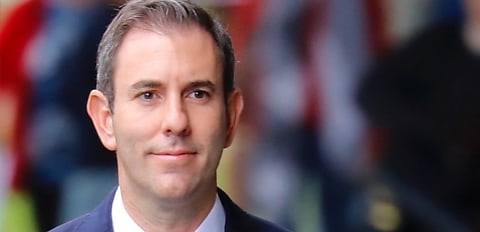“The Reserve Bank has served us relatively well but no institution should be beyond the kind of thinking that says, what’s international best practice?” the federal Treasurer Jim Chalmers said in response to his new essay “Capitalism after the crises” published in The Monthly.
The essay investigated Australia’s future following three international crises: the GFC, the pandemic, and the current energy and inflation shock.
Mr Chalmers questioned how to create an economy that both creates ‘lots of profits’ for the private sector while generating ‘lots of opportunities’ for Australians.
He also advocated the renovation of the Reserve Bank and the Productivity Commission and the overhaul of markets.
“We will renovate the Reserve Bank, responding to the RBA Review,” Mr Chalmers said.
“A key part of renovating our approach to the economy is how do we have better designed and better informed markets?
“How do we get the structures right and the personnel right so that we’re most likely to get good decisions in the national economic interest?”
The comments came ahead of the government’s review into the RBA after widespread criticisms over the central bank’s approach to implementing the monetary policy framework and communicating its decisions over recent years.
The review, which kicked off in July 2022, is expected to be complete by March 2023 and focuses on inflation targets, mandates, culture, and board makeup.
Alongside the RBA review, Mr Chalmers said in his essay the government will “renew and revitalise” the Productivity Commission — “a powerful think tank advising government on productivity”.
“These institutions need to help deliver change in areas of disadvantage, to prod and inform and empower,” he wrote.
Addressing the paper in an interview, Mr Chalmers said the Productivity Commission has the capacity to be a “real ideas factory, a real engine of economic policy ideas”.
“I don’t want to mess with its independence, I don’t want to substantially diminish the Productivity Commission, I want to turbocharge it,” Mr Chalmers said.
The essay also discussed government‑business co‑investment opportunities and closer economic cooperation.
Mr Chalmers flagged schemes such as the Clean Energy Finance Corporation, Rewiring the Nation fund, the National Reconstruction Fund and the Housing Australia Future Fund were examples of systems working.
The government’s election promise to deliver a $10 billion Housing Australia Future Fund aims to provide ongoing investment returns and deliver new social and affordable homes as well as investments to address acute housing needs.
It is expected that returns from the fund will deliver the government’s commitment of 30,000 new social and affordable homes in the fund’s first five years including 4,000 homes for women and children impacted by family and domestic violence or older women at risk of homelessness.
“While capital allocation in traditional markets is obviously not perfect, it is based on common metrics of performance,” Mr Chalmers said.
Government spending has too often been characterised by a “spray and pray” approach.
If we could redesign markets for investment in social purposes based on common metrics of performance, many more well-run “for purpose” organisations could get much more of the growth capital they need.
“I strongly believe that by strengthening our economic institutions and strengthening our economy, we strengthen our democracy,” Mr Chalmers said.
[Related: RBA review will be forward looking wont take pot shots: Treasurer]

